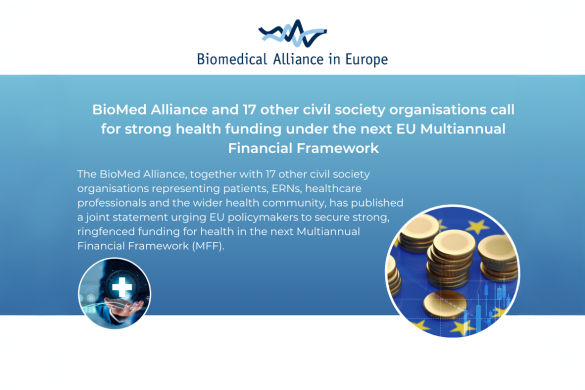by Elena Moro
For May 2018, we have selected: Kappos L, Bar-Or A, Cree BAC, et al., for the EXPAND Clinical Investigators. Siponimod versus placebo in secondary progressive multiple sclerosis (EXPAND): a double-blind, randomized, phase 3 study. Lancet Neurol 2018;391:1263-1273.
Secondary progressive multiple sclerosis (SPMS) is characterized by a previous history of relapsing remitting MS (RRMS) and the continuous progression of disability over the years typically without relapses. Unfortunately, available disease-modifying treatments are effective only in SPMS patients with relapsing disease, sometimes apostrophized as “relapsing MS”. In RRMS patients, it has been shown that siponimod, a selective sphingosine 1-phosphate (S1P) receptor1,5 modulator, could reduce the number of active brain lesions in MRI and clinical relapses. Siponimod can easily pass through the blood-brain barrier and might prevent synaptic neurodegeneration and stimulate remyelination.
The effects of 2 mg oral sipinomod in SPMS patients were studied in a large phase 3, randomized, double-blind, placebo-controlled, event-driven and exposure-driven trial involving 292 hospital clinics in 31 countries.
Primary outcome was time to 3-month confirmed disability progression (CDP) events, defined as a 1-point increase in the Expanded Disability Status Scale (EDSS) if baseline score 3-5, or a 0.5-point increase if baseline score 5.5-6.5. Between the secondary outcomes, the most relevant were time to 3-month confirmed worsening in the timed 25-foot walk test (T25FW) at least by 20%, changes in T2 MRI lesion volume and brain volume, and time to 6-month CDP.
Statistical analysis was done using Cox proportional hazard models and log-rank test for the primary outcome.
The analyses were done in 1099 siponimod patients and in 546 placebo patients, enrolled between 2013 and 2015. At baseline, the average duration of the disease was 16.8 years, with a mean time since conversion to SPMS of 3.8 years. Most patients (64%) had not relapsed in the previous two years. Duration of the study was on average 21 months. Study was completed in 903 patients with the active drug (82%) and in 424 patients with placebo (78%).
In the time-to-event analysis, 26% of the patients with siponimod (288) and 32% of the patients with placebo (173) had 3-month CDP (HR 0.79, 95% CI 0.65-0.95; RR 21%, p = 0.013). There was no difference in the T25FW for the overall population. In the siponimod group there was less increase in T2 lesion volume from baseline compared to placebo (95% CI -877.3—513.3, p=0.0001). Moreover, brain volume shrunk at a lower rate in patients with siponimod compared to placebo (adjusted mean over months 12 and 24, -0.50% vs. 0.65%, absolute difference 0.15%, CI 0.07-0.23, p=0.0002). The risk of 6-month CDP was also reduced in the siponimod group versus placebo (HR 0.74, 95% CI 0.6-0.92, RR 26%, p=0.0058).
Concerning safety, 89% of the active drug group had at least one adverse event versus 82% of the placebo group. Patients with sipinomod experienced more adverse events previously reported with S1P-receptor modulation, i.e., bradycardia at treatment initiation, hypertension, lymphopenia and macular edema.
“This large study randomized placebo-controlled study supports the efficacy of siponimod in reducing disability progression in SPMS patients”, says Prof. Ludwig Kappos, Division of Neurology, University of Basel, Switzerland, leading author. ”We have selected a typical SPMS population of patients with high level of disability and no signs of inflammatory activity related to the disease, in which small changes in the EDSS score have a heavy impact on quality of life. Therefore, our findings are particularly relevant for this patient population”.
“Although results are encouraging and siponimod was relatively well tolerated, the drug effects have been evaluated for a rather short period of time.’ says Prof. Jera Kruja, Division of Neurology, University of Tirana, Albania. “Confounding factors could also have been the assumption of disease-modifying treatments before sipinimod. Further studies should assess benefits and side effects of siponimod in the long-term.“
The other nominees for the May 2018 Paper of the month are:
- Steffel J, Verhamme P, Potpara TS, et al. The 2018 European Heart Rhythm Association Practical Guide on the use of non-vitamin K antagonist oral anticoagulants in patients with atrial fibrillation: executive summary. Europace 2018, 1-12, doi:10.1093/europace/euy054. This is the second update of the 2013 Practical Guide about the use of non-vitamin K antagonists to prevent stroke in patients with atrial fibrillation. This practical paper deals with 20 topics of concrete clinical scenarios that are discussed using the available clinical evidence.
- Sundelin HEK, Chang Z, Larsson H, et al. Epilepsy, antiepileptic drugs, and serious transport accidents. A nationwide cohort study. Neurology 2018;90: e1111-e1118. doi:10.1212/WNL.0000000000005210. In this paper, the investigators identified 29,220 adult subjects with epilepsy who were matched with 267,637 controls using the Swedish registry. They found that epilepsy increases the risk of serious transport accidents (car, bicycle, motorcycle, and pedestrian subtypes) independently of the use of antiepileptic drugs.
- Morrow SA, Fraser JA, Day C, et al. Effect of treating acute optic neuritis with bioequivalent oral vs. intravenous corticosteroids. A randomized clinical trial. JAMA Neurol 2018; doi:10.1001/jamaneurol.2018.0024. In this single-center Canadian study, 55 patients with acute optic neuritis were randomized to 1,000 mg IV methylprednisone sodium succinate versus 1,250 mg oral prednisone. At 6 months, there was no significant difference between groups concerning the recovery of the latency of the P100 component of the visual evoked potential.











